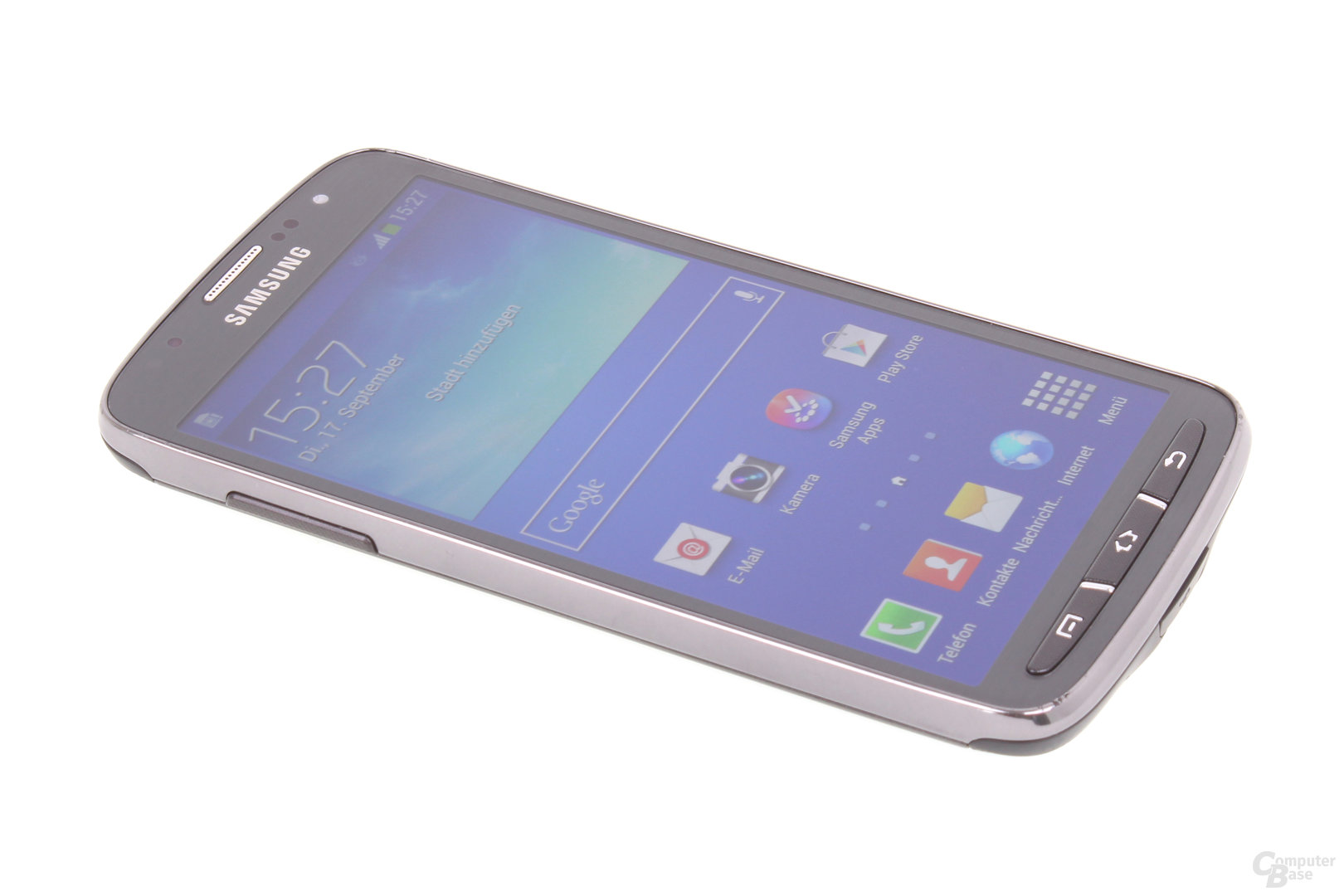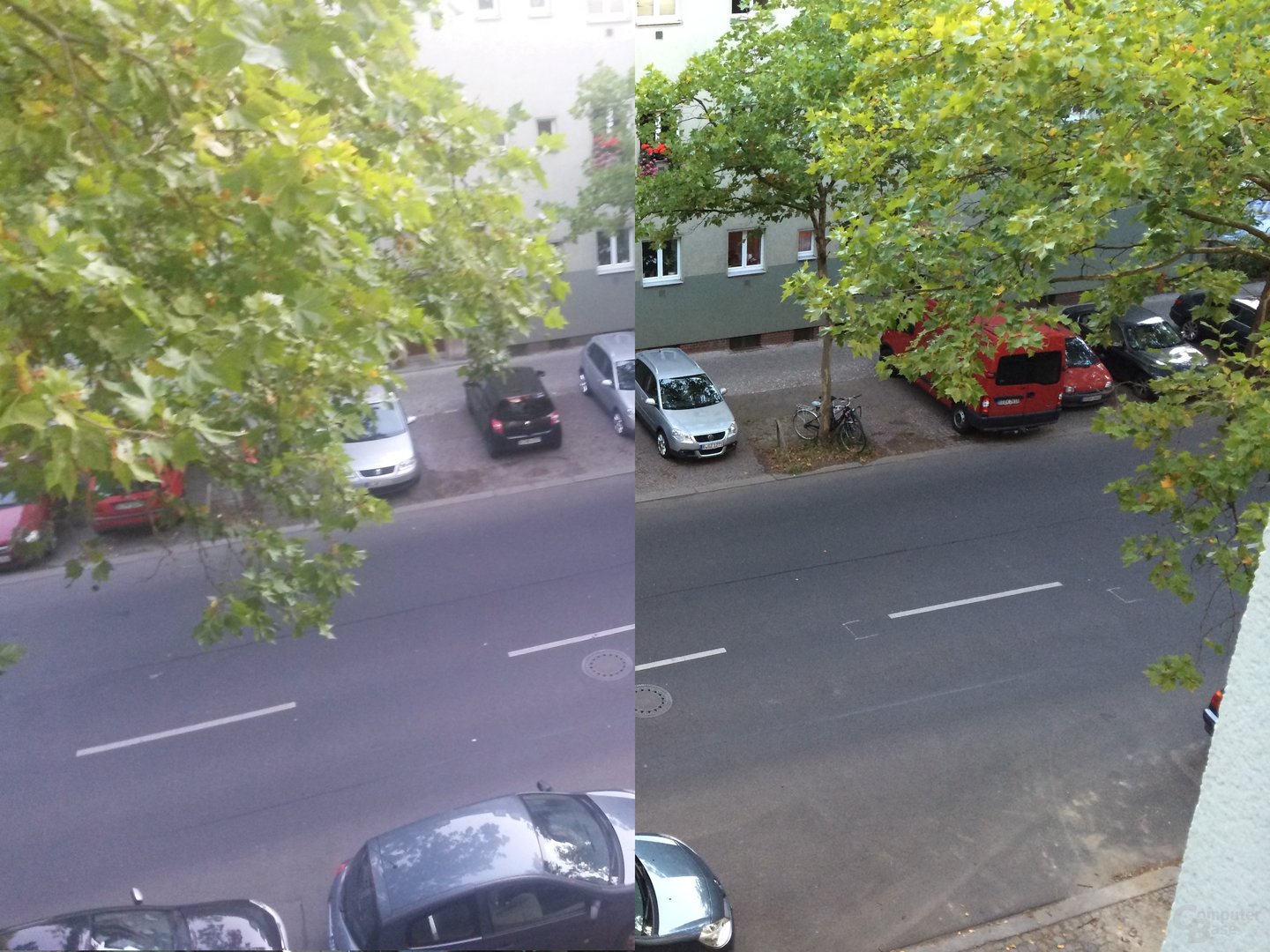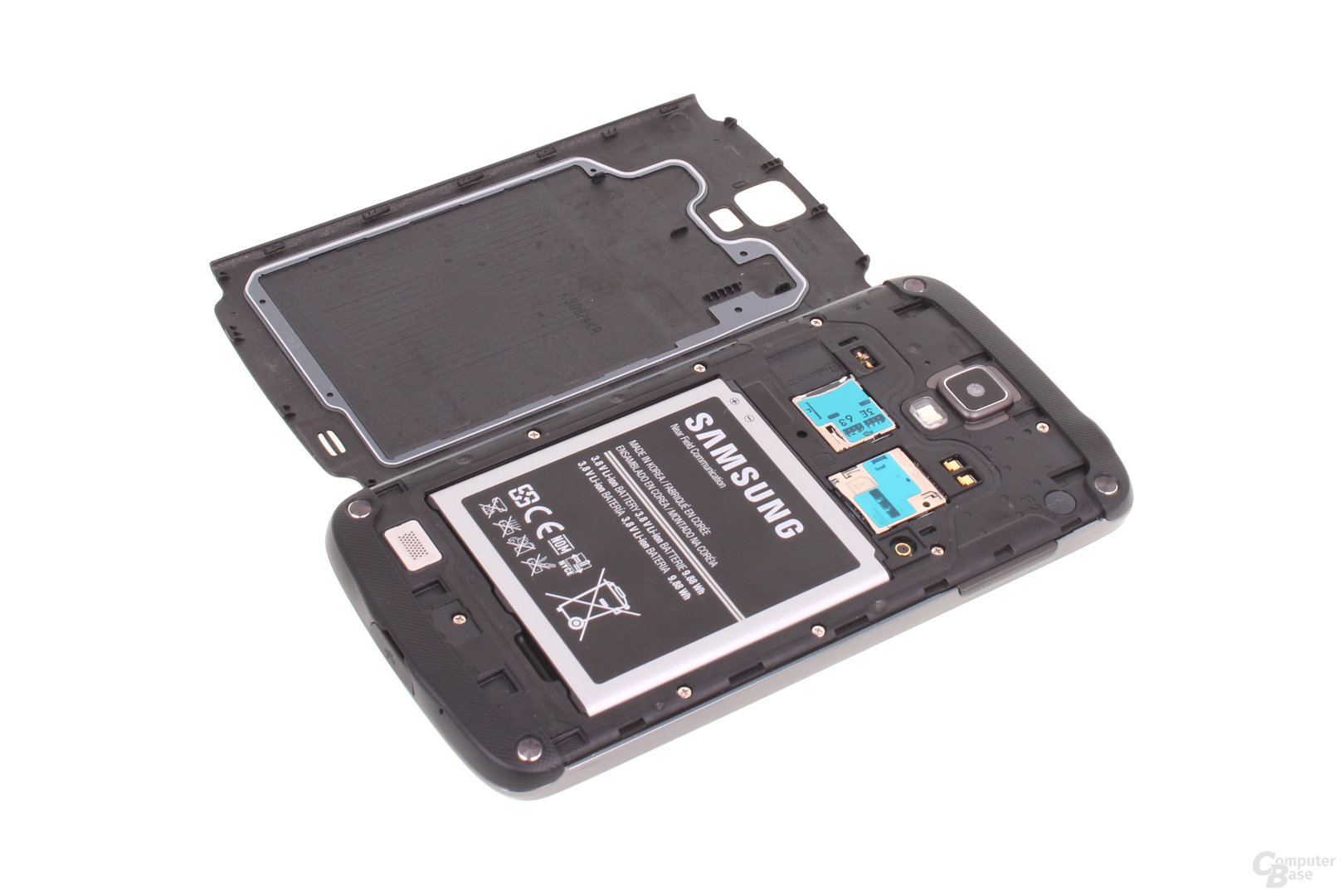Das Galaxy S4 Active im Test: Wasserfest mit großem ABER
2/2Das ist anders
Die Zertifizierung ist die Besonderheit des Galaxy S4 Active, darüber hinaus unterscheidet sich das Gerät in einigen weiteren Eckpunkten vom Original. Es ist 21 Gramm schwerer, geringfügig größer und setzt auf einen TFT-LCD- anstatt auf einen AMOLED-Bildschirm. Die Kamera kommt im Active mit 8-MP-Auflösung wie beim Galaxy S III oder Note II und nicht mit der des herkömmlichen Galaxy S4 (13 MP) daher.
Der Bildschirm bietet eine vergleichbare maximale Helligkeit, ist mit einem Weißpunkt bei 8.600 Kelvin allerdings deutlich kälter eingestellt. Der Kontrast liegt bei unterdurchschnittlichen 856:1, der technologisch bedingte Kontrast der AMOLED-Displays bleibt unerreicht.
Auf dem Papier liegt die Leistung des Active auf dem Niveau des Galaxy S4, das in der europäischen Ausführung mit einem Qualcomm Snapdragon 600 ausgestattet ist. In der Praxis bestätigt sich dies im grafiklastigen GFXBench, während das herkömmliche Galaxy S4 im Browser-Benchmark SunSpider wiederholt schneller ist; ein Ergebnis, das auf unterschiedliche Software-Versionen und nicht auf unterschiedliche Hardware zurückzuführen ist.
Deutlich macht sich der Wechsel der Bildschirmtechnologie bei der Akkulaufzeit. Die sehr gute Laufzeit des Galaxy S4 wird im Test bei einer moderaten Helligkeit von 200 cd/m² mehr als halbiert. Im Vergleich mit allen bisher in dieser Disziplin getesteten Smartphones landet das Active am Ende des Feldes.
Die Kamera nimmt bei Sonnenschein schnell ansehnliche Bilder auf, unter nicht optimalen Bedingungen ist die Qualität nach heutigen Maßstäben hingegen unterdurchschnittlich. Sowohl die Aufnahme der im Schatten liegenden Straße (1. Oktober, 18:00 Uhr) als auch die Aufnahme der Peripherie unter Kunstlicht verdeutlichen das im Vergleich zum iPhone 5S. Um die Szenerie mit Verschlusszeit von 1/33 einzufangen benötigt der Sensor des Active eine hohe Lichtempfindlichkeit von ISO 200 respektive ISO 1250. Die Folge sind ein starkes Bildrauschen und Fehlfarben. Das iPhone 5S gibt sich mit einem Bruchteil der Lichtempfindlichkeit (ISO 64 respektive ISO 200) bei identischer Verschlusszeit zufrieden.
Alle weiteren internen Ausstattungsmerkmal sind bei Galaxy S4 und Galaxy S4 Active identisch. Zu erwähnen ist in Bezug auf das Gehäuse noch, dass der Micro-USB-Anschluss eine Kappe vorweist, der Audio-Ausgang hingegen intern abgedichtet worden ist. Weitere Unterschiede zum normalen S4 finden sich unterhalb des Displays, wo nun zwei weitere physische Tasten die Sensortasten ersetzen.
| Samsung Galaxy S4 Active | Samsung Galaxy S4 | |
|---|---|---|
| OS: | Android 4.2.2 | |
| Display: | 5,0 Zoll 1.080 × 1.920 Pixel (441 ppi) TFT-LCD |
5,0 Zoll 1.080 × 1.920 Pixel (441 ppi) Full HD Super AMOLED |
| Bedienung: | Touch, Knopfreihe | |
| SoC: | Qualcomm Snapdragon 600, Quad-Core, 1,9 GHz, Adreno 320 |
|
| Arbeitsspeicher: | 2 GB | |
| Speicher: | 16 GB (erweiterbar per microSD-Karte) | |
| Mobilfunkstandards: | GSM/EDGE/GPRS UMTS/HSPA+ (bis zu 42,2 MBit/s im Down-, 5,76 MBit/s im Upstream) LTE Cat3 (bis zu 100 MBit/s im Down-, 50 MBit/s im Upstream) |
|
| Weitere Übertragungsstandards: | WLAN 802.11a/ac/b/g/n Bluetooth 4.0 (LE) A-GPS & GLONASS NFC Infrarot Micro-USB 2.0 |
|
| Hauptkamera: | 8,0 Megapixel, LED-Blitz | 13,0 Megapixel, LED-Blitz |
| Frontkamera: | 2,0 Megapixel | |
| Akku: | 2.600 mAh | |
| Abmessung: | 139,7 × 71,3 × 9,1 mm | 136,6 × 69,8 × 7,9 mm |
| Gewicht: | 151 Gramm | 130 Gramm |
| IP67-Zertifizierung: | ja | nein |
Fazit
Das Active ist eine robustere Variante des Galaxy S4, die gegen Staub und Wasser in Mengen, wie sie ein Smartphone im Alltag heimsuchen könnten, gewappnet ist. Alles darüber hinaus kann funktionieren, muss es aber nicht. Das Galaxy S4 Active ist keine Unterwasserkamera, auch wenn Samsung genau das auf der Produktseite und der Kamera-App suggeriert. Das Handbuch untersagt den Einsatz im Meer. Auch auf wiederholte Nachfrage hat sich Samsung bis zur Veröffentlichung dieses Artikel nicht zu dieser Thematik geäußert.
Diese Einschränkung klar ausgesprochen, vereint das Active viel Hard- und Software des Galaxy S4 in einem widerstandsfähigeren Gehäuse, das das Gerät zweifelsohne zum besseren Outdoor-Begleiter macht. Etwas Übung mit dem Verschlussmechanismus vorausgesetzt, verschmerzt das Gerät ein Bad im Sand oder Bachlauf unbeschadet – immer vorausgesetzt, das mit Gorilla Glas geschützte Display übersteht den Sturz ebenfalls.

Der gegenüber dem Galaxy S4 getauschte Bildschirm leuchtet dabei vergleichsweise hell, bietet technologiebedingt allerdings einen niedrigeren Kontrast und ist kühler eingestellt. Die Farben fallen weniger leuchtend aus. Auch leidet die Akkulaufzeit gegenüber dem Original spürbar, die Kamera ist unter widrigen Lichtverhältnissen nicht mehr auf der Höhe der Zeit und das Gerät fällt schwerer und größer aus.
Robuster und ein waschechtes Galaxy S4? Der Kunde muss sich am Ende entscheiden, ob er für etwas mehr Widerstandsfähigkeit die Vorteile des echten S4 aufgeben möchte. Denn eine perfekte Symbiose ist das S4 Active nicht.
- im Alltag staub- und wasserdicht
- hohe Systemleistung
- großer Funktionsumfang
- scharfes Display
- Akku austauschbar
- Speicher erweiterbar
- geringe Akkulaufzeit
- Kontrast & Helligkeit unterdurchschnittlich
- Kamera deutlich abgewertet
- Schutzklasse hält Versprechen nicht
- keine optische Rückmeldung zur Dichtheit
(*) Bei den mit Sternchen markierten Links handelt es sich um Affiliate-Links. Im Fall einer Bestellung über einen solchen Link wird ComputerBase am Verkaufserlös beteiligt, ohne dass der Preis für den Kunden steigt.
Dieser Artikel war interessant, hilfreich oder beides? Die Redaktion freut sich über jede Unterstützung durch ComputerBase Pro und deaktivierte Werbeblocker. Mehr zum Thema Anzeigen auf ComputerBase.


